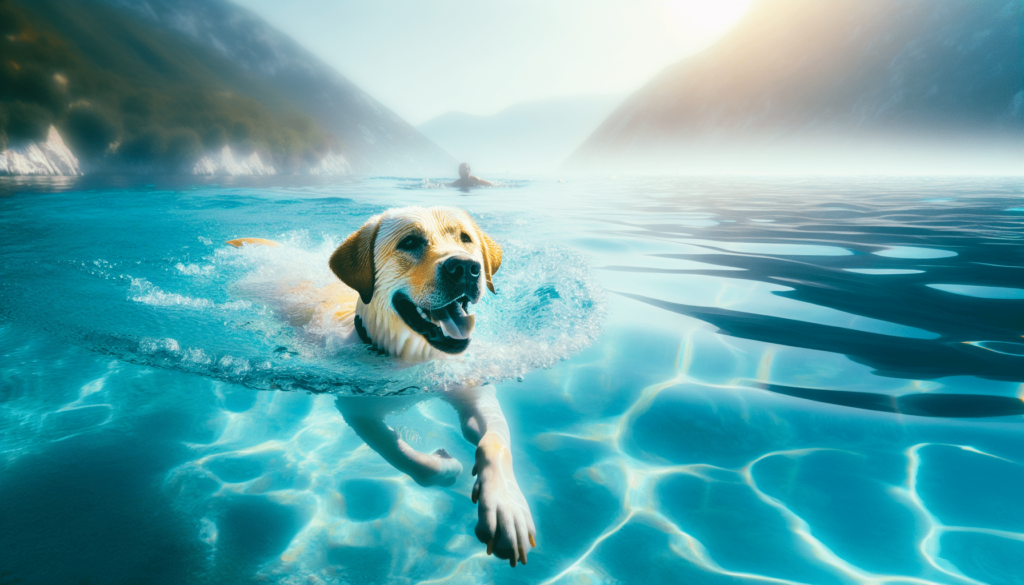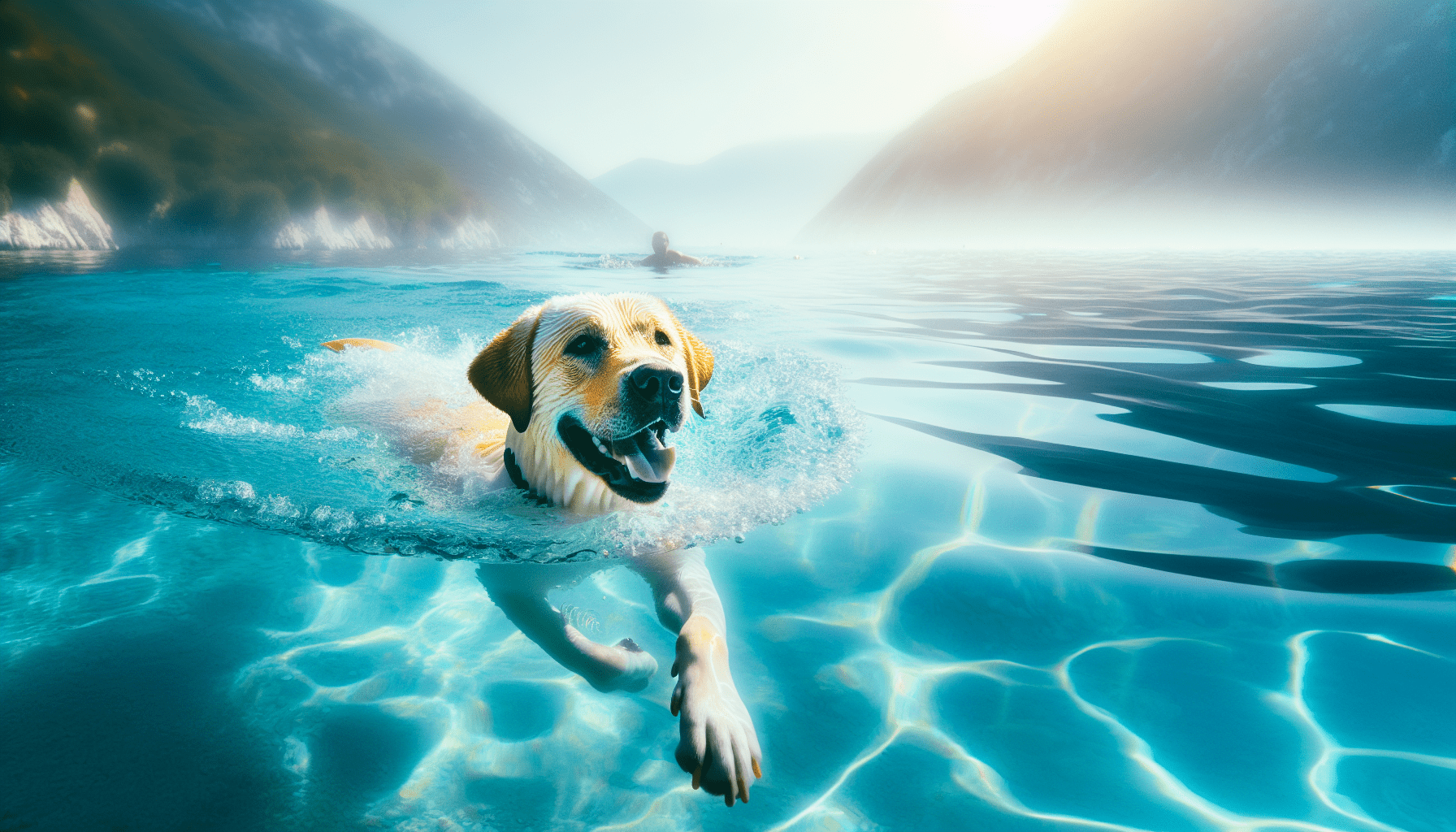If you’ve ever wanted to take your furry friend for a swim but worry about their safety, worry no more! In this article, we will guide you on how to teach your dog to swim safely. Whether you have a water-loving breed or a nervous pooch, we’ve got you covered with simple yet effective tips that will help your four-legged companion enjoy the water while staying safe. So grab your dog’s favorite toy and get ready to make a splash!
Choosing the Right Location
When it comes to teaching your dog to swim safely, choosing the right location is key. Research local swimming areas to find suitable spots for your furry friend. Look for beaches or pools that allow dogs, as they provide a dog-friendly environment where your pup can freely enjoy the water. Additionally, consider the size and temperament of your dog. Smaller dogs might feel more comfortable in shallow water, while larger dogs might prefer deeper areas. Look for calm and shallow water, as it provides a gentle introduction to swimming and reduces the risk of accidents.
Safety Precautions
Just like humans, dogs need safety precautions when swimming. Using a dog life jacket is essential, especially for those who are just starting to learn how to swim. This ensures your dog stays buoyant in the water and helps prevent accidents. Remember to start with shallow water, giving your dog a chance to get used to the sensation and build confidence. Stay within arm’s reach at all times to provide immediate assistance if needed. Avoid crowded or busy swimming areas, as they can be overwhelming for your dog. Lastly, keep an eye out for signs of fatigue or distress, such as excessive panting or struggling to stay afloat.

Introducing Your Dog to Water
Introducing your dog to water in a positive way is crucial for a successful swimming experience. Start by creating positive associations with the water. Take your dog to the swimming area and let them explore at their own pace. This allows them to become familiar with the sights, sounds, and smells of the water. Using toys or treats as motivation can also help entice your dog into the water. Gradually increase the depth of the water as your dog becomes more comfortable, always ensuring they feel safe and supported.
Teaching Basic Swimming Techniques
Once your dog has become accustomed to the water, it’s time to teach them some basic swimming techniques. Support your dog’s hind end by placing one hand under their belly, providing stability and balance. Encourage a paddling motion by gently moving their legs in a swimming motion. Practice swimming in a straight line to help your dog develop coordination and strength. As your dog progresses, introduce turns and maneuvering in the water, allowing them to navigate their way effortlessly through the water.

Building Confidence and Trust
Building confidence and trust is essential for a successful swimming journey with your dog. Offer reassurance and praise throughout the process, letting your dog know they are doing a great job. Gradually increase the distance from shore, challenging your dog to explore further and swim on their own. Swim alongside your dog to provide support and encouragement. This not only builds their confidence but also strengthens your bond. Expose your dog to different water environments, such as lakes or rivers, to ensure they feel comfortable swimming in various settings.
Teaching Water Safety Commands
Teaching your dog water safety commands is crucial to ensure their safety while swimming. Start by teaching them a reliable recall command, such as “come” or “here.” This allows you to call them back to you if they venture too far or if you sense any danger. Introduce a command for getting out of the water, such as “out” or “exit.” This helps your dog understand when it’s time to leave the water and come back to shore. Finally, train your dog to wait for permission before entering the water. This teaches them to always look to you for guidance and helps prevent them from jumping into potentially unsafe situations.
Dealing with Fear or Anxiety
Some dogs may experience fear or anxiety when introduced to water for the first time. It’s important to be patient and understanding during this process. Take things at your dog’s pace and avoid rushing them into the water if they show signs of distress. Consult a professional dog trainer or behaviorist if necessary, as they can provide specialized guidance based on your dog’s individual needs. Using counter-conditioning techniques, such as positive reinforcement or desensitization, can also help your dog overcome their fears. Additionally, minimize exposure to stressful situations and gradually increase their comfort level over time.
Health Considerations
Before swimming with your dog, it’s important to check with your vet. They can assess your dog’s overall health and ensure they are fit for swimming. Watch out for signs of waterborne illnesses, such as vomiting, diarrhea, or lethargy, both during and after swimming. If you notice any unusual symptoms, consult your vet immediately. After swimming, rinse your dog’s fur and paws with fresh water to remove any chlorine or salt residues that may irritate their skin. Additionally, prevent ingestion of excessive amounts of water by regularly offering small breaks and ensuring your dog does not gulp water excessively.
Swimming Etiquette
When swimming with your dog, it’s important to follow specific rules or regulations of the swimming area. Some places may have specific guidelines for dog owners, such as designated areas or leash requirements. Always clean up after your dog, as this helps maintain a clean and enjoyable environment for everyone. Respect other people and dogs using the area by keeping your dog under control and not allowing them to intrude on others’ space. Lastly, be mindful of wildlife and natural habitats, ensuring you and your dog do not disturb or harm any animals or plants.
Continued Practice and Supervision
While your dog may become a strong swimmer over time, it’s important to regularly refresh their swimming skills. Practice swimming together to keep their skills sharp and reinforce their confidence in the water. Supervise your dog closely when they are near water, even if they are experienced swimmers. Accidents can happen, and keeping a watchful eye ensures their safety at all times. Additionally, keep an eye on weather conditions, as strong currents or inclement weather can pose risks to both you and your dog. Always prioritize safety and make informed decisions based on the conditions.
Teaching your dog to swim safely is a rewarding process that not only provides them with a fun activity but also promotes their physical and mental well-being. Remember to choose the right location, take safety precautions, introduce your dog to water gradually, teach basic swimming techniques, and build confidence and trust. Additionally, focus on teaching water safety commands, dealing with fear or anxiety, considering health factors, practicing swimming etiquette, and continuing to supervise your dog even as they become proficient swimmers. With patience, guidance, and lots of positive reinforcement, you and your furry friend can enjoy many safe and memorable swimming adventures together.

